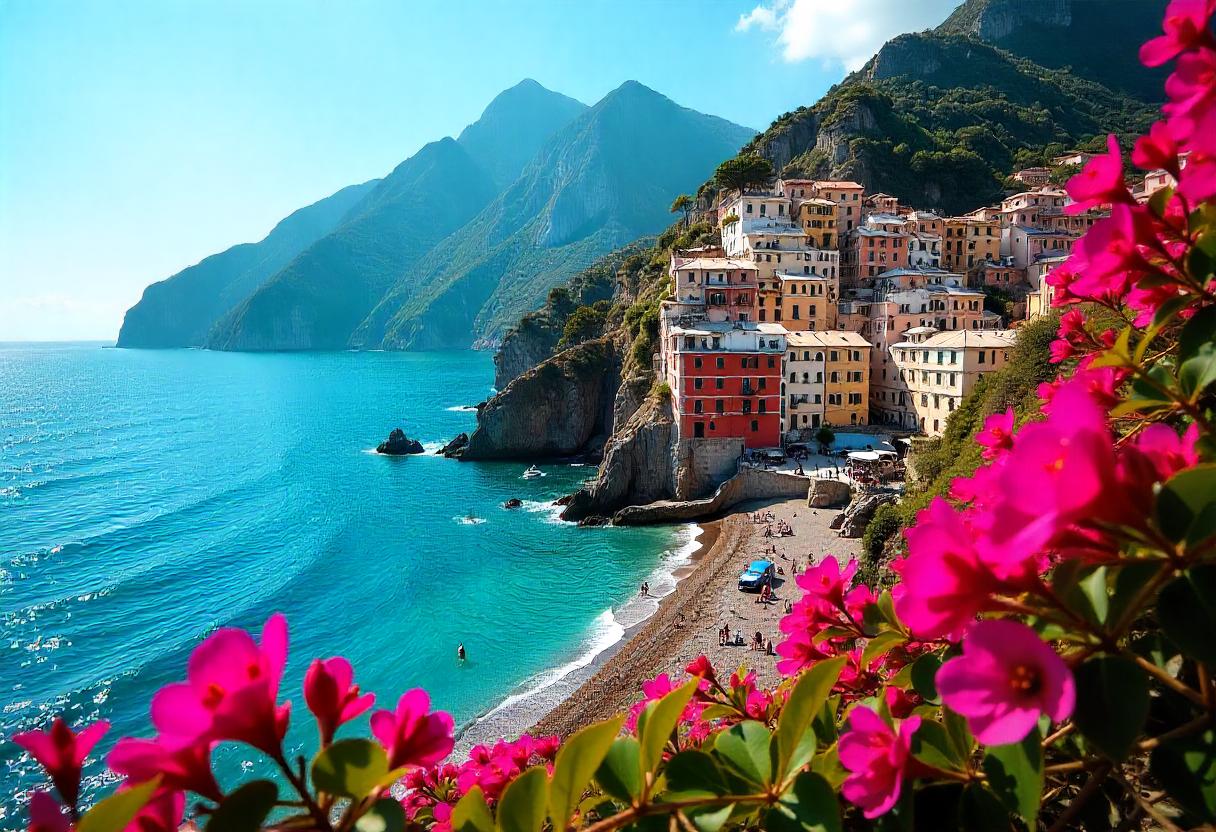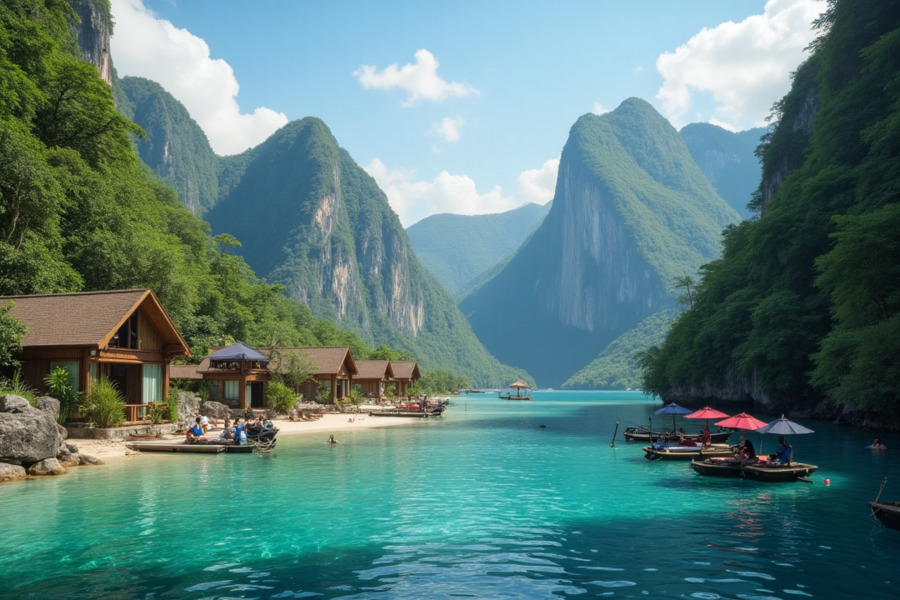≡-Greece’s Aegean Islands, From Nisyros To Mykonos, Confront ‘Disneyfication’ And Loss Of Natural Landscapes – Viral of Today
<> Viral of Today <>
Home » TRAVEL NEWS » Greece’s Aegean Islands, From Nisyros To Mykonos, Confront ‘Disneyfication’ And Loss Of Natural Landscapes Monday, June 9, 2025Greece’s Aegean Islands, stretching from the quiet volcanic beauty of Nisyros to the cosmopolitan shores of Mykonos, are facing a growing crisis that threatens both their ecological integrity and cultural identity. Scientists and environmentalists are sounding the alarm over the rapid transformation of these once-pristine islands, where forest loss, agricultural decline, and rampant construction are giving rise to what many now call “Disneyfication.” This phenomenon — marked by the over-commercialization and artificial reshaping of authentic landscapes to cater to mass tourism — is eroding the natural and traditional fabric of the region. As concrete replaces greenery and historical charm gives way to tourist-driven development, the Aegean Islands stand at a critical crossroads: preserve their environmental heritage or continue down a path of unsustainable change.Greece’s Aegean Islands at Risk as Unchecked Tourism and Construction Devour Forests and FarmlandThe Aegean islands of Greece—long celebrated for their natural beauty, cultural charm, and agricultural traditions—are now at a crossroads. Environmental scientists are raising alarm bells over the ecological toll of runaway tourism and real estate development, which are steadily erasing the fragile balance between nature and human activity. A recent scientific conference, aptly titled “Islands at Risk: In Search of Balance,” revealed alarming data and underscored the urgent need for sustainable policies before the islands’ ecosystems reach a point of no return.A Bleak Environmental ForecastBetween 1990 and 2018, a staggering thirteen thousand eight hundred fifty-one hectares of forest vanished from the Aegean islands, signaling an ecological emergency that has gone largely unaddressed. The islands of Chios, Thasos, and Rhodes emerged as some of the hardest hit, each recording forest losses of over thirty percent. These green sanctuaries, once teeming with biodiversity and endemic species, are now rapidly giving way to concrete infrastructure, resorts, and private developments.While forest degradation is alarming, it is not occurring in isolation. Accompanying this decline is an exponential rise in artificial surfaces—paved roads, luxury hotels, shopping areas, and private estates that have taken the place of agricultural terraces and natural woodlands. Nowhere is this transformation more dramatic than on the islands of Mykonos and Syros, where the extent of built-up land has ballooned by three hundred forty-one percent and three hundred ten percent respectively. What were once tranquil coastal enclaves with traditional Cycladic homes are now overwhelmed by sprawling urbanization aimed at accommodating mass tourism.The Collapse of Agricultural TraditionsEqually concerning is the collapse of agricultural activity, a pillar of the islands’ cultural identity for generations. Since 1961, farming on the Aegean islands has declined by thirty-nine percent—a statistic that tells only part of the story. On smaller islands like Oinousses and Nisyros, farming has all but disappeared, leaving behind abandoned terraces, fallow fields, and the fading memory of community-based food production. The erosion of agriculture not only threatens food security and local economies but also dismantles an essential part of the Aegean’s cultural landscape.Agricultural decline is further compounded by the fact that younger generations are moving away from farming due to the high cost of living and the promise of more lucrative opportunities in the tourism sector. As olive groves, vineyards, and citrus orchards fall into neglect, imported goods increasingly fill the shelves of supermarkets, weakening local resilience and inflating carbon footprints.The Illusion of the Island DreamEnvironmental researcher Theodorou summarized the heart of the issue with a stark observation: “People buy into the island dream, then pull up the drawbridge.” The phrase speaks volumes about the mentality behind unchecked tourism investment—visitors and new property owners arrive with a romanticized vision of island life, only to contribute to the displacement of local communities, environmental degradation, and social exclusivity.This “drawbridge effect” is evident in the rising cost of real estate and everyday living on the islands, which often pushes long-term residents to the margins while turning central neighborhoods into holiday rental zones. Traditional homes are converted into luxury accommodations. Small farms are replaced by swimming pools. Local customs fade beneath a tide of globalized consumer preferences.Searching for BalanceThe current trajectory is unsustainable, say scientists and environmental planners. Without decisive intervention, the Aegean islands risk losing the very qualities that make them so appealing—authenticity, biodiversity, and cultural richness. Experts at the conference urged for immediate policy shifts that prioritize environmental protection, responsible tourism, and community inclusion.Potential solutions include imposing stricter land-use regulations, capping construction permits in ecologically sensitive zones, incentivizing sustainable agriculture, and implementing tourism management frameworks that promote low-impact travel. There’s also a push for better environmental education among both residents and visitors, fostering a shared sense of stewardship for these fragile landscapes.Moreover, some local authorities are already exploring strategies such as eco-zoning and heritage farming initiatives. These efforts, though still in their infancy, represent hope that a more sustainable model of island development can be achieved—one that celebrates nature, preserves cultural identity, and supports long-term livelihoods.Greece’s Aegean Islands, from Nisyros to Mykonos, are rapidly losing their natural landscapes due to unchecked tourism and overdevelopment, fueling concerns of “Disneyfication” as authentic environments are replaced by artificial, tourist-centric constructions.The Aegean islands face a pivotal moment. The dual forces of mass tourism and rapid construction are pushing their ecosystems and communities to the brink. But with informed leadership, local engagement, and forward-thinking policies, Greece can chart a new course—one where economic vitality and environmental responsibility coexist. Only then can the Aegean continue to enchant the world without losing its soul.
This information will surprise you!
See also
- Read until the end to discover everything.
- Important information you need to know.
- Interesting facts and helpful tips.
Conclusion
Did you enjoy the news? Keep following us daily!













